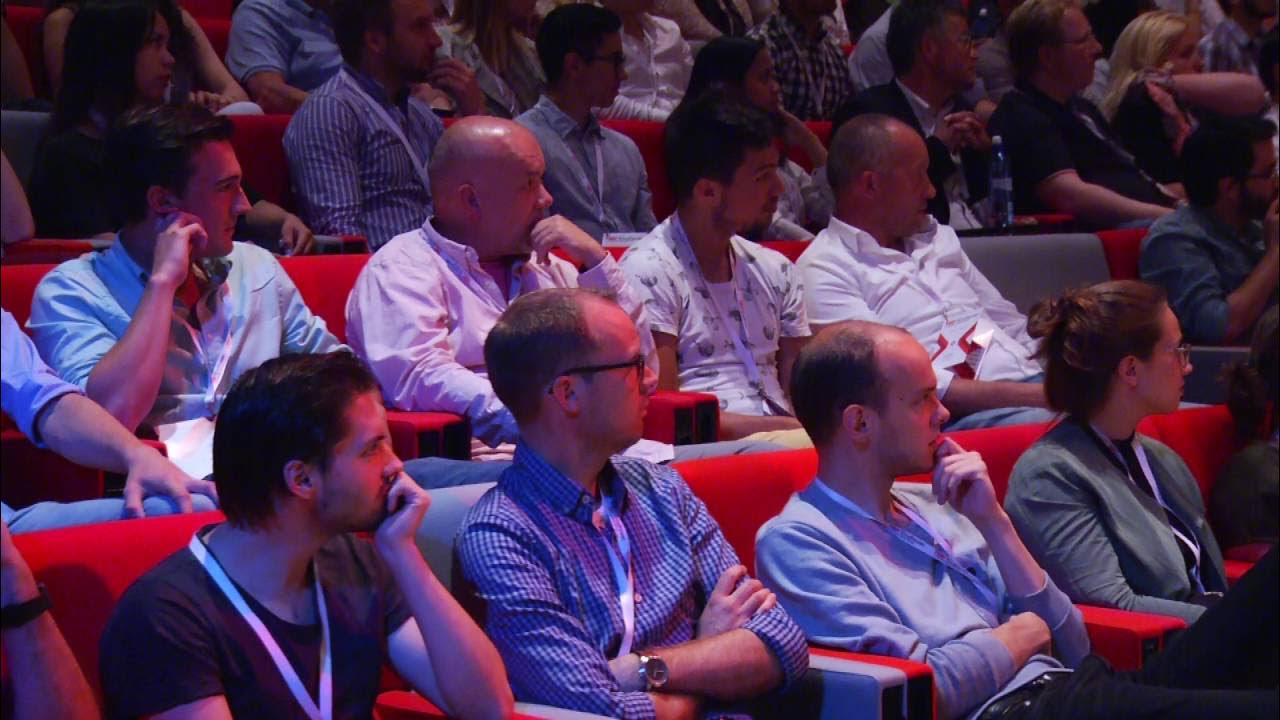Dance your PhD | John Bohannon & Black Label Movement | TEDxBrussels
Summary
TLDRIn this engaging talk, the speaker humorously addresses the economic impact of poor PowerPoint presentations, costing an estimated 250 million dollars daily. They advocate for a creative solution: replacing PowerPoint with dance to convey complex ideas, inspired by the 'Dance Your PhD' contest. The speaker highlights the effectiveness of dance in simplifying scientific concepts and proposes dancers as a more engaging and potentially cost-effective alternative to traditional presentations, suggesting a shift in how we communicate complex information.
Takeaways
- 🌡️ The script discusses a method using lasers to cool matter down to near absolute zero, which is counterintuitive as light typically heats objects.
- 🎭 The speaker suggests that complex scientific ideas could be better communicated through dance rather than traditional methods like PowerPoint presentations.
- 🏫 The concept of 'Dance Your PhD' is introduced, where scientists explain their research through dance, making it more accessible and understandable.
- 🧠 The speaker, a Molecular Biologist with a PhD, admits to struggling with understanding complex scientific concepts despite her educational background.
- 💃 The University of Minnesota's biomedical engineer, David Odde, is highlighted for collaborating with dancers to study cellular movement, demonstrating the practical application of dance in scientific research.
- 🌌 Superfluids, a state of matter where atoms lose individual identity and exhibit bizarre properties, are mentioned as an example of scientific phenomena that defy common intuition.
- 💸 The economic impact of bad PowerPoint presentations is critiqued, with an estimated cost to the global economy of 250 million dollars per day.
- 🗣️ The speaker humorously proposes replacing PowerPoint with dance as a means to save money and improve communication, especially in explaining complex economic and political issues.
- 🎨 The potential negative consequences of cutting public funding for the arts are discussed, including increased unemployment and societal issues.
- 🌟 The speaker concludes with a vision of a future where the human form in motion, such as dance, is valued for its own sake beyond its utility in communication.
Q & A
What is the main idea proposed by the speaker to address the financial burden?
-The speaker proposes using dance as a means of communication instead of PowerPoint presentations to save money and improve the effectiveness of conveying complex ideas.
How does the speaker's physicist friend at MIT explain the cooling effect of lasers?
-The physicist explains that by using lasers with precisely tuned frequencies, atoms can absorb photons and slow down, eventually cooling to the point where they enter a new state of matter known as a superfluid.
What are the unusual properties of superfluids mentioned in the script?
-Superfluids have the ability to slow photons down to 60 km/h and flow with no viscosity or friction, which allows them to creep up the inside wall of a container and flow over the top.
What is the 'Dance Your PhD' contest mentioned by the speaker?
-The 'Dance Your PhD' contest is an initiative where scientists explain their research through dance instead of using traditional verbal or written explanations.
Why does the speaker believe that bad PowerPoint presentations are a threat to the global economy?
-The speaker believes that bad PowerPoint presentations waste time and resources, with an estimated drain of 250 million dollars per day, contributing to a significant annual waste.
How does the speaker relate the concept of 'Dance Your PhD' to the broader idea of using dance for communication?
-The speaker suggests that the success of 'Dance Your PhD' shows that dance can effectively communicate complex scientific concepts, and this approach could be expanded to explain other complex problems beyond academic research.
What is the role of dancers in David Odde's research at the University of Minnesota?
-Dancers collaborate with David Odde, a biomedical engineer, to study how cells move by changing their shape, which helps him build and test mathematical models of cellular motion.
What is the economic estimate provided by the speaker regarding the cost of PowerPoint presentations?
-The speaker estimates that the cost of PowerPoint presentations is around 250 million dollars per day, leading to an annual waste of about a hundred billion dollars.
How does the speaker propose to utilize artists in the absence of public funding for the arts?
-The speaker proposes to use artists, specifically dancers, as a replacement for PowerPoint presentations to explain complex problems and save money.
What is the speaker's vision for the future regarding the use of dance in communication?
-The speaker envisions a future where dance might become an even more powerful tool of persuasion than PowerPoint, and where people can enjoy the human form in motion as a luxury.
Outlines

此内容仅限付费用户访问。 请升级后访问。
立即升级Mindmap

此内容仅限付费用户访问。 请升级后访问。
立即升级Keywords

此内容仅限付费用户访问。 请升级后访问。
立即升级Highlights

此内容仅限付费用户访问。 请升级后访问。
立即升级Transcripts

此内容仅限付费用户访问。 请升级后访问。
立即升级浏览更多相关视频

How to avoid death By PowerPoint | David JP Phillips | TEDxStockholmSalon

Why We Fear Public Speaking | Taylor Williams | TEDxUF

How to present to keep your audience’s attention | Mark Robinson | TEDxEindhoven

COMMENT utiliser POWERPOINT ? - Formation complète Microsoft 365

28. Literasi Digital - Mengenal Microsoft PowerPoint - Informatika Kelas X

The secret to getting better sleep tonight | James Leinhardt | TEDxManchester
5.0 / 5 (0 votes)
